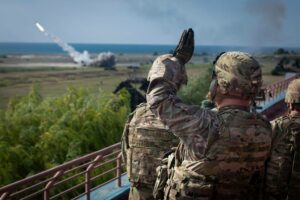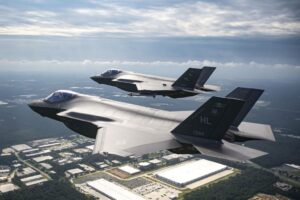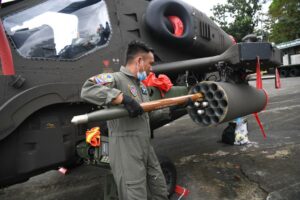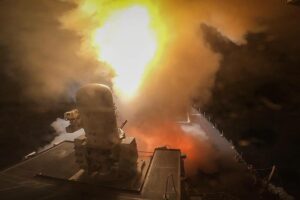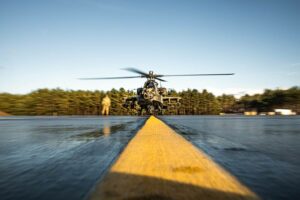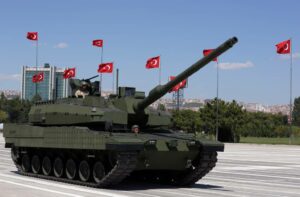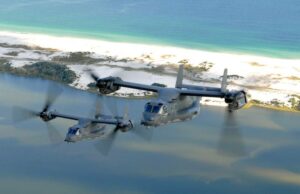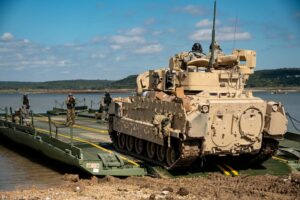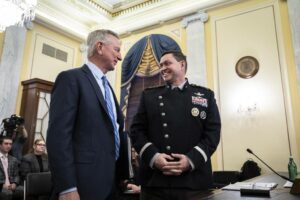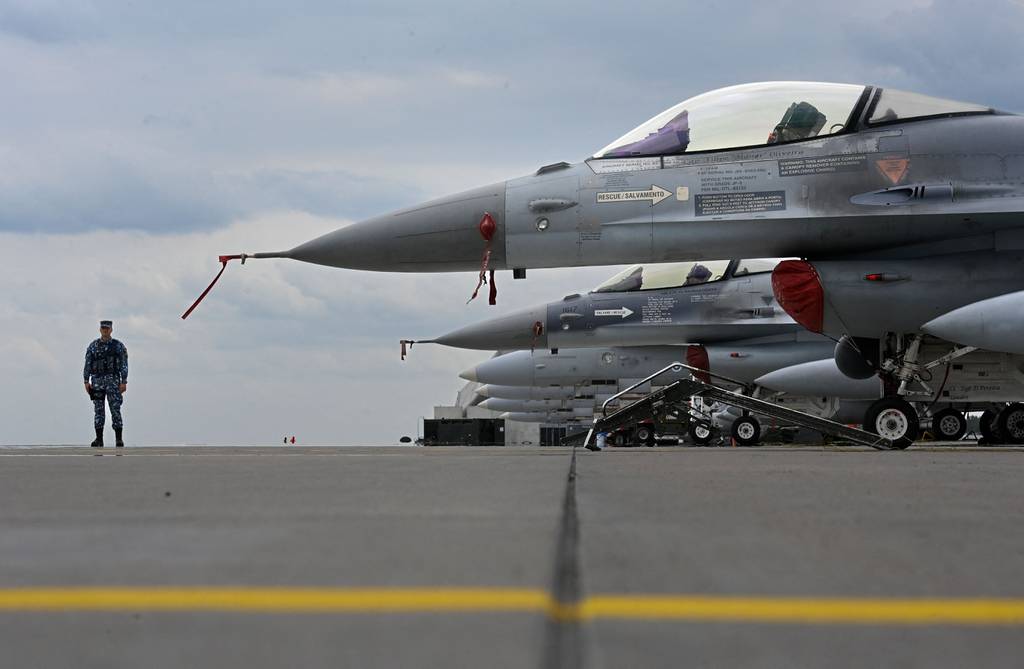
DUBAI, United Arab Emirates — The advent of artificial intelligence in defense is prompting a reevaluation of decades-old military leadership traditions, top air force officials from across the globe said at a gathering here earlier this month.
The Nov. 12 Dubai Air Chiefs Conference, or DIACC, that kicked off this year’s iteration of the Dubai Air Show explored the fundamental changes airmen should expect as a result of AI permeating their professions.
“Traditional leadership style is seen as somewhat archaic or outdated, and understandably,” Brig. Gen. Azzan Ali A. Al Nuaimi, commander of the UAE’s air warfare and missile center, told the audience. “A top-down approach or hierarchy-based decision making is no longer well-suited for an operational environment where information is more fluid and rapid,” he added.
Armed forces across the globe are embracing the promise of artificial intelligence in military tasks. The level of complexity in the technologies varies greatly, from speeding up rote analysis tasks that previously took days or weeks for humans, to generating novel courses of action on the battlefield based on a vast amount of contextual data.
Sophisticated AI algorithms carry the risk of making undesirable calls, especially when it comes to targeting and killing. That fear has prompted leaders to keep humans in the loop for sensitive tasks. “It is key to strike a balance between trusting AI and human decision-making,” Al Nuaimi said.
Air Vice Marshal Glen Braz, who manages readiness for the Australian Air Force, argued that the speed of future conflicts means command-and-control networks must keep up.
“AI has increased the space and pace of warfare,” he said. “There will be more needs moving forward to delegate decision making in a fast-paced environment, where disconnectivity is present.”
Italian Air Force Chief of Staff Lt. Gen. Luca Goretti struck a similar chord, arguing that Russia’s invasion of Ukraine has proven the need to prize connectivity above all else.
“If you can manage the data, you win. If you cannot manage or process it, you lose,” he said. “If you keep a piece of information to yourself, you lose. The Ukraine war has taught us the need for that, to share the data.”
While the consensus among top officers here was to favor shorter chains of command to accommodate next-generation of AI in the military, other experts believe there is another side to the argument.
“While there may be some compression of chains of commands due to the increased potential speed of AI-supported decision making, this will not always be the case,” said retired Australian Army Maj. Gen. Mick Ryan. “Sometimes we may use it to slow down decision-making so we can be more strategic in our thinking.”
Elisabeth Gosselin-Malo is a Europe correspondent for Defense News. She covers a wide range of topics related to military procurement and international security, and specializes in reporting on the aviation sector. She is based in Milan, Italy.
- SEO Powered Content & PR Distribution. Get Amplified Today.
- PlatoData.Network Vertical Generative Ai. Empower Yourself. Access Here.
- PlatoAiStream. Web3 Intelligence. Knowledge Amplified. Access Here.
- PlatoESG. Carbon, CleanTech, Energy, Environment, Solar, Waste Management. Access Here.
- PlatoHealth. Biotech and Clinical Trials Intelligence. Access Here.
- Source: https://www.defensenews.com/artificial-intelligence/2023/11/29/top-air-force-officials-ponder-new-leadership-styles-as-ai-takes-root/
- :has
- :is
- :not
- :where
- $UP
- 10
- 12
- 70
- a
- above
- accommodate
- across
- added
- advent
- AI
- AIR
- Air Force
- AL
- algorithms
- All
- always
- among
- amount
- an
- analysis
- and
- Another
- approach
- Arab
- Arab Emirates
- archaic
- ARE
- argued
- argument
- Army
- artificial
- artificial intelligence
- AS
- At
- audience
- Australian
- aviation
- Balance
- based
- Battlefield
- BE
- believe
- between
- Calls
- CAN
- cannot
- carry
- case
- Center
- chains
- Changes
- chief
- comes
- complexity
- Conference
- conflicts
- Connectivity
- Consensus
- contextual
- courses
- covers
- data
- Days
- decision
- Decision Making
- Defense
- down
- Dubai
- due
- Earlier
- else
- embracing
- emirates
- Environment
- especially
- Europe
- expect
- experts
- experts believe
- Explored
- fast-paced
- favor
- fear
- fluid
- For
- Force
- Forces
- Forward
- from
- fundamental
- future
- gathering
- Gen
- globe
- greatly
- he
- here
- HTTPS
- human
- Humans
- if
- images
- in
- increased
- information
- Intelligence
- International
- invasion
- IT
- Italy
- iteration
- jpg
- Keep
- Key
- leaders
- Leadership
- Level
- longer
- lose
- Making
- manage
- manages
- May..
- means
- MILAN
- Military
- Month
- more
- moving
- must
- Need
- needs
- networks
- New
- news
- next-generation
- no
- nov
- novel
- of
- off
- officers
- officials
- on
- operational
- or
- Other
- our
- Pace
- piece
- plato
- Plato Data Intelligence
- PlatoData
- ponder
- potential
- present
- previously
- prize
- process
- procurement
- promise
- proven
- range
- rapid
- Readiness
- related
- Reporting
- result
- Risk
- root
- Ryan
- Said
- sector
- security
- seen
- sensitive
- Share
- she
- should
- show
- side
- similar
- slow
- So
- some
- somewhat
- Space
- specializes
- speed
- Staff
- Strategic
- strike
- style
- styles
- takes
- tasks
- taught
- Technologies
- that
- The
- their
- There.
- Thinking
- this
- to
- told
- took
- top
- Topics
- trusting
- Ukraine
- ukraine war
- Understandably
- United
- United Arab Emirates
- us
- use
- Vast
- vice
- war
- was
- we
- Weeks
- when
- WHO
- wide
- Wide range
- will
- win
- you
- yourself
- zephyrnet

